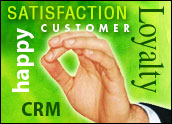
Target may be implementing price matching, but there are other ways to compete. Customer experience is the new battleground in retail sales, and winning this battle requires winning over customers with truly personalized service.
Despite all the advancements in technology, from personalized retargeting to the newest in CRM technologies, personalized customer service and efforts to build customer loyalty have all but disappeared. Forty-four percent of consumers Avaya and BT Research surveyed in 2013 said they considered customer loyalty to be a relic of the past.
When was the last time you can remember walking into a business where anyone knew your name? Today, most businesses not only don’t know who you are, they cannot tell you the last time you were in their store. It’s impossible for any business to create personalized customer service if it doesn’t even know who its customers are.
Customer Service Mistakes
There are five basic mistakes many organizations are making that stand between them and their ability to deliver truly superior service for customers.ol {font-weight: bold;}ol span {font-weight: normal;}
- Every customer is a new customer. In order to have a meaningful relationship with anyone, in business or in life, each party needs to understand who the other is as an individual. This applies to customers. Each customer has a unique set of likes, dislikes and preferences.
Sixty-eight percent of businesses Call Center Executive Priorities surveyed said they planned to increase their spending on customer experience in 2014. Smart companies will use those resources to make sure they can identify who the customer is as an individual and leverage that knowledge to serve to provide better service.
Technology such as beacons, on-location WiFi, social logins, and cookies and tags can help identify customers, so companies can begin the process of getting to know them.
- Breaking through internal barriers. Some of the biggest inhibitors of positive customer experience are the barriers created by silos that exist within a company. Customers don’t care about the various divisions. Rather, they see the company as a single entity.
A business must make sure it can share information about each customer engagement — whether over the Web, on the phone, via email or in a store — across the company to better serve customers in the moment that matters most. All divisions must work in harmony to serve the customer.
- Empowering employees with information about the customer. A business must have complete visibility into every process, platform and touchpoint, so customers’ intents, likes and preferences are visible to all stakeholders throughout their journey with the company.
Making customer insights transparent to all divisions empowers company associates to use the information when it matters most — at the moment of engagement. This is when the magic happens!
By using this information to deliver truly personalized service, companies have the opportunity to knock the socks off customers with the level of service they are providing.
- Pursuing quantity over quality of engagements. Many businesses let automated systems push out messages, but they aren’t able to tailor the messages to the customer. This creates a massive blind spot for the company and an email headache for the customer.
These automated systems are transactional in nature and focus on the sale or an offer, not on the customer. Plus, customers can see right through supposedly personal, computer-generated emails.
Businesses deploying this tactic end up playing the conversion game, pushing out more and more messages to try to achieve sales. This tactic may appear to work for a while, but it won’t take long to reach the point of diminishing returns. The lack of authenticity of this approach turns customers off.
- Not having the right offer ready. This last mistake is, in a way, the culmination of all the other mistakes.
One of the main benefits of knowing customers intimately is having the ability to make the right offer at the right time. For example, if a customer walks into a store after visiting the company’s website multiple times for a specific product, an associate who knows the customer’s search history and can offer that product during the in-store visit has a much greater chance of closing a sale.
Making the right offer at the right time can increase conversions and help build customer loyalty.
Connect the Dots
Each customer journey includes multiple touchpoints — dots that need to be connected to draw a holistic experience. Today, businesses must increase the value of their relationship currency at every section of the sales funnel.
Brands that offer personalization will outperform those that don’t by more than 15 percent by 2018, according to Gartner. It’s critical for businesses to compete on customer experience — or risk losing out to competitors.
It’s no mystery that people love to feel special. They want to feel that a brand sincerely cares about them and their likes and dislikes. Being remembered makes people feel good, which in turn builds long-lasting relationships.
Companies have a unique opportunity to engage and serve their customers like never before. By personalizing each interaction, engaging with customers at every touch point, and understanding customers as individuals, brands can drive customer loyalty.















































Social CRM
See all Social CRM